Burnout: The Side Eye To Joy
Written by: Christina Marble
Monday morning. We go to the office (or in many cases, log on) and are overwhelmed at the volume of emails and items on our to-do list. At the beginning of a staff meeting, one of our coworkers, or perhaps our supervisor, talks about what they did for the weekend.
Perhaps they tried brunch at a new restaurant, or enrolled in a yoga class or Skillshare course to enhance their learning for fun. We shudder in cynicism, compared to our weekends spent catching up on work, or care for others so much that it depletes our energy. How could anyone have energy to devote to outside activities when we are so exhausted and worn down?
This is a picture of burnout. The constant cynicism, exhaustion, and helplessness that comes from outside obligations, whether it be work, school, or caring for family members, takes from our energy and resources, leaving us without a lifeline or ability to enjoy life as it comes along. Let’s examine the definition of burnout, its symptoms, and its impact.
What is Burnout?
Burnout is, “A culmination of mental, physical, and emotional stress. The demand outweighs the resources,” says Kelley Anne Bonner, licensed therapist, and burnout expert. “[Burnout] is cynicism, hopelessness, and a permanent side eye to joy.”
Burnout is different from exhaustion in that exhaustion can feel sudden. However, burnout is a culmination of multiple practices and events. “Burnout revolves around detachment,” says Erayna Sargent, founder of Hooky Wellness. “[Burnout] is a misalignment of expectations and reality.”
What are the symptoms?
There are emotional and physical symptoms of burnout, as well as dangers. Emotional symptoms include exhaustion, a depressed mood, increased anxiety, and a perception of powerlessness or effectiveness about work, psychologist Joy E. Lere tells Hooky Wellness.
Burnout is also associated with sleep problems, stomach upsets and ulcers, and somatic complaints, such as headaches or migraines without a physical explanation. It often occurs in stages from a change in appetite and energy to pulling away and isolation. Under burnout, we can be driven to function under our reptilian brain. We have no filter.
Dangers of burnout include prolonged stress, medical health issues, and the development of clinical depression and anxiety. Often we distract ourselves with drugs, alcohol, and an imbalance in our sexual behavior. We’re overwhelmed with sadness and it’s hard to feel those feelings underneath -- we don’t know if we’re sad, anxious, or angry.
Why does burnout affect Millennials and Professionals so much?
Contrary to the lazy stereotype, Millennials suffer from burnout the most because we are purpose driven when it comes to our work.
“[Millennials] work for a purpose, not a paycheck, and are disillusioned by modern-day work,” says Bonner. They are also wedged between the Boomers, who achieved professional success through corporate careers, and Gen Z’ers, prioritize happiness above all else, says Sargent.
Millennials are more stressed than previous generations, because we are within the framework of American success. Millennials were taught to follow rules which results in unfulfilled career goals.
For professionals, the current demands outweigh the resources. Modern Western work culture requires professionals to give until they are unable to. It’s common to work through lunches and weekends, and we receive so little in financial compensation or personal fulfillment. For Millenials and professionals alike, their careers may not be connected to their values.
Social media may also contribute to that burned out feeling. “The ‘hustle’ culture to push faster, harder, and farther creates and compounds the problem,” says Lere. Social media may also skew the perception of what peers do and creates pressure to keep up with an unrealistic or unhealthy pace.
The ABCs of Healing
What can we do to get rid of that permanent side eye to joy? Bonner suggests that potential victims of burnout start with the ABCs of healing.
Authenticity: Evaluate what makes us happy and thrive. Learn and establish activities that excite passion and creativity. Vow to be ourselves. Select jobs that complement those values.
Brave and Boundaried: In our educational and professional lives we often haven’t learned the value of saying no. When practicing boundaries, remember that saying no to activities and others is a yes to ourselves. Be judicious with calendars and technology
Compassion and Clarity: Ask for compassion with ourselves as we embark on this journey of healing. Evaluate in the present moment. Stick to boundaries that feel right to us.
Practice self care. It isn’t just fancy spa dates, vacations, and shopping sprees. Healthy self-care is integrated into our daily routines and consists of care for the emotional, physical, mental, spiritual, and professional self.
Bonner suggests that we invest in free or self care practices; such as logging out for our lunch breaks; reading, meditating, or walking for 15 minutes a day; and wearing clothes that feel good.
For severe levels of burnout consider a sabbatical, reducing work hours, or transition to a new career.
Healing from burnout requires uncovering the open nerve as it relates to workplace and personal trauma. Start from within .Go to therapy. Regain your agency and make time for self care, because you deserve it.
Sometimes that coworker’s weekend plans can make us shudder with cynicism, but burnout can be treated through clinical and personal methods. Invest in yourself, because healing is on the other side.

